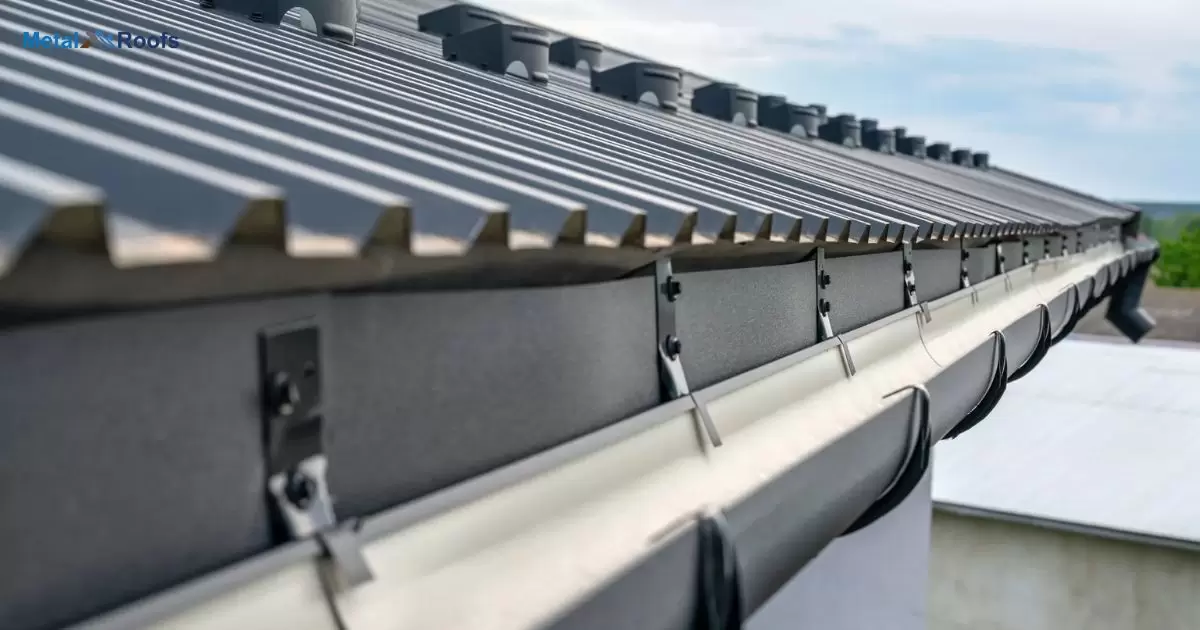Metal roofs need gutters. Gutters catch rain, snow from roof. Gutters direct water away. Gutters prevent water damage. Gutters are necessary for homes. Metal roofs require gutter systems. Gutters control water flow. Gutters protect foundations.
Metal roofs need gutters for proper drainage. Without them, water can damage your home. Gutters help protect your foundation and landscaping. Do metal roofs have gutters? Yes, they do, and they are crucial for your roof’s health. Make sure to maintain them for long-lasting results.
Metal roofs and gutters are essential for protecting your home. A 29-gauge metal roof is durable and strong, while gutters guide water away, preventing erosion and foundation issues. Regular cleaning keeps them working well and protects your home.
Key Takeaways
- Metal roofs can have gutters like any other roofing material.
- Gutters are crucial for directing rainwater away from the roof and foundation.
- Special considerations are needed for installation on metal roofs, such as appropriate fasteners.
- Gutter material choice depends on climate and aesthetic preferences.
- Well-installed gutters protect the metal roof, preventing water damage and corrosion.
Gutter Roof
Metal roofs can have gutters to direct rainwater away. Properly installed gutters prevent water damage and corrosion. They require special fasteners for metal roofs. Choice of gutter material depends on climate and preference.
Installing gutters on metal roofs needs careful consideration. It ensures they function effectively and blend aesthetically. Well-installed gutters maintain the integrity of the metal roof. They protect both the roof and the building’s foundation.
Gutters On Metal Roof
| Aspect | Description |
| Importance | Essential for directing water away from the roof. |
| Materials | Metal or PVC commonly used for gutter construction. |
| Installation | Requires special considerations for metal roofs. |
| Maintenance | Regular cleaning and inspection to prevent clogs. |
| Benefits | Prevents water damage and extends roof lifespan. |
Metal roofs can definitely have gutters, just like other roofs. Gutters are important because they guide rainwater away from the roof and foundation, preventing damage. Installing gutters on metal roofs requires special consideration, using appropriate fasteners.
The type of gutter material chosen depends on climate and preference, ensuring functionality and aesthetics. Well-installed gutters protect the metal roof, avoiding water damage and corrosion.
What Is Guttering?
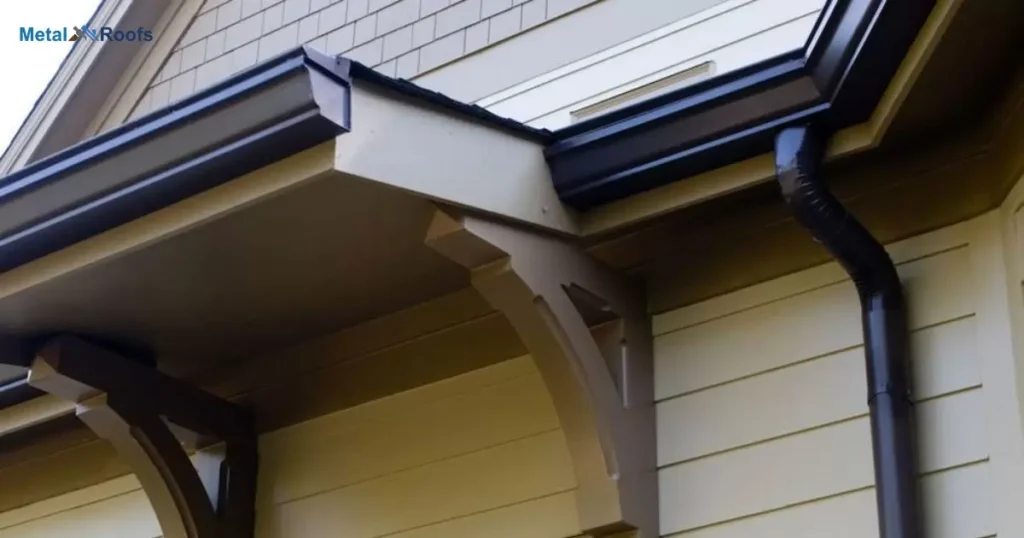
Guttering is a system designed to catch rainwater as it runs off a roof. It consists of channels attached along the edge of the roof that collect the water and direct it to downspouts. These downspouts then channel the water away from the building’s foundation, preventing water damage.
Guttering is crucial for protecting both the roof and the structure of a building from potential harm caused by water accumulation. The installation of guttering involves attaching gutters to the edge of the roof using brackets and ensuring they have a slight downward slope for proper drainage.
Gutters Purpose
Gutters serve a vital role in managing rainwater on roofs. They collect water and guide it away from the roof and foundation. Without gutters, rainwater can cause damage to the roof and lead to flooding around the building’s base.
Properly installed gutters prevent water accumulation, which can weaken the structure over time. They also help to protect the exterior of the building from stains and erosion caused by constant water exposure. In essence, gutters are essential for maintaining the integrity of both the roof and the foundation, ensuring the longevity of the entire structure.
What Is Rain Gutters?
Rain gutters are channels attached to the edges of roofs. They collect rainwater and guide it away from buildings. Gutters prevent water from pooling on roofs, which can cause damage over time. Without gutters, rainwater can seep into the foundation, leading to structural issues.
The primary function of rain gutters is to protect buildings from water damage. They channel rainwater away from walls and foundations, preventing erosion and mold growth. Gutters come in various materials, including aluminum, vinyl, and steel.
Types Of Gutters For Metal Roofs
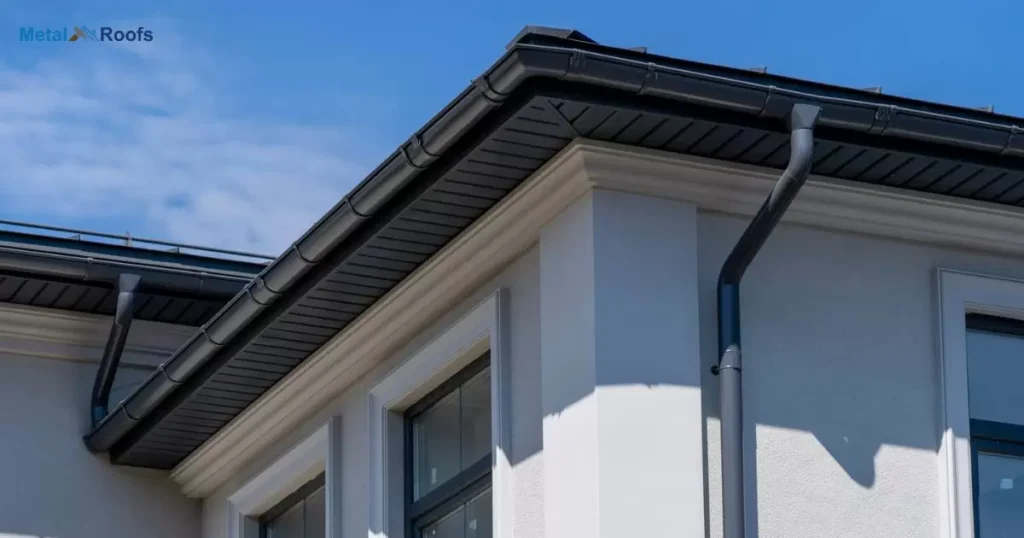
When it comes to metal roofs, there are several types of gutters that can be used to effectively manage rainwater runoff. Here are some common types:
K-Style Gutters: These are among the most common gutter profiles and are suitable for various roof types, including metal roofs. K-style gutters have a flat bottom and back, with a decorative front that resembles the letter k.
Half-Round Gutters: As the name suggests, half-round gutters have a semicircular shape. They are often chosen for their classic appearance, particularly on historic or traditional homes.
Box Gutters: Box gutters are typically custom-made to fit the specific dimensions of a roof. They are often integrated into the structure of the building and may be concealed behind fascia boards or parapet walls.
Seamless Gutters: Seamless gutters are fabricated on-site to match the exact measurements of a roof without any seams or joints along their lengths. This construction minimizes the risk of leaks and enhances the gutter system’s durability.
Copper Gutters: While less common than aluminum or steel gutters, copper gutters offer durability and an attractive appearance that develops a natural patina over time.
When selecting gutters for a metal roof, it’s essential to consider factors such as compatibility with the roofing material, durability, aesthetics, and local weather conditions. Proper installation and regular maintenance are crucial for ensuring the effectiveness and longevity of the gutter system.
Gutter Alternatives For Metal Roof
When considering gutters for a metal roof, alternatives exist. One option is a drip edge, installed along the roof’s edge, guiding water away. Drip edges prevent water from seeping under the metal panels, reducing the risk of damage.
Another alternative is rain chains, which offer an aesthetic appeal while directing water downwards. Drip edges and rain chains provide effective alternatives to traditional gutters. They serve the same purpose of managing rainwater runoff.
Gutters On Metal Roof Problems
Metal roofs with gutters can encounter problems if not installed correctly. Special attention is needed during installation, ensuring proper fastening to avoid leaks. Without adequate installation, water may seep under the metal sheets, leading to interior damage.
Another issue is the choice of gutter material. In regions with extreme weather, aluminum or stainless steel gutters are preferable due to their durability. Regular maintenance is crucial to prevent clogging, which can cause water backup and potential roof damage.
Gutters For Metal Roof And Snow
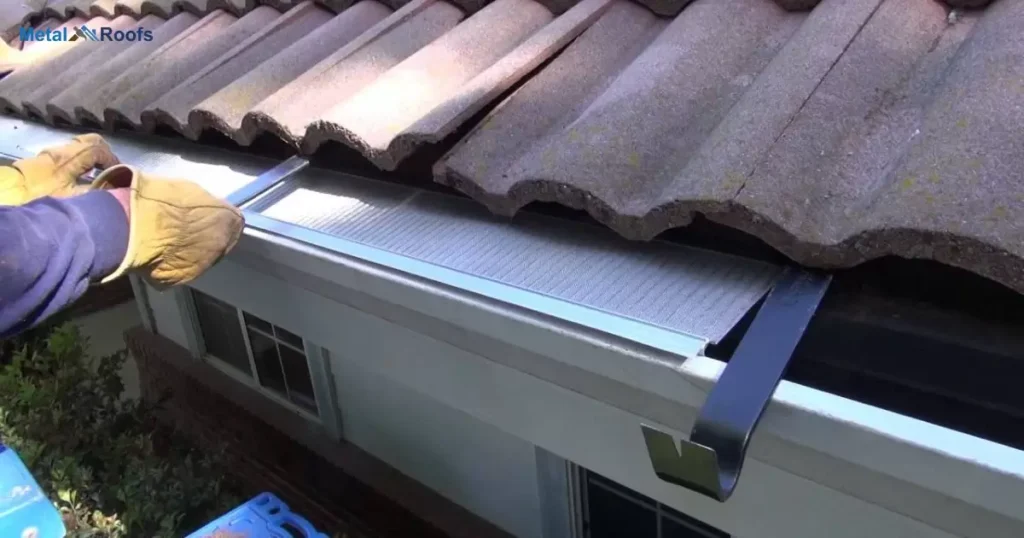
Metal roofs can have gutters just like any other roof. Gutters are important for directing water away from the roof and the foundation. Special considerations are needed for installing gutters on metal roofs, like using the right fasteners. The choice of gutter material depends on the climate and personal preference.
Well-installed gutters protect the metal roof, preventing water damage and corrosion. When it comes to snow, gutters on metal roofs must be properly maintained. Snow accumulation can put extra weight on the gutters, potentially causing damage. Regular clearing of snow from gutters helps prevent problems and ensures proper drainage.
Box Gutters For Metal Roof
Box gutters are compatible with metal roofs. They efficiently channel rainwater away from the roof and building foundation. Installation requires specific considerations, ensuring compatibility with the metal roof. Proper fasteners secure the gutters firmly in place, enhancing durability.
Choosing the right material for box gutters is crucial, especially when it comes to preventing metal roof leaks. Factors such as climate and personal preference influence the decision. Well-installed box gutters protect the metal roof from water damage, extending its lifespan significantly.
Standing Seam Roof Gutters
Standing seam roofs can indeed accommodate gutters, just like other roof types. Gutters are essential for redirecting rainwater away from the roof and foundation to prevent damage. When installing gutters on standing seam roofs, it’s important to use appropriate fasteners designed for metal roofing materials.
The choice of gutter material should consider factors like climate and personal preference. Well-installed gutters not only protect the standing seam roof but also prolong its lifespan by preventing water accumulation and potential corrosion.
Tips For Optimizing Network Performance
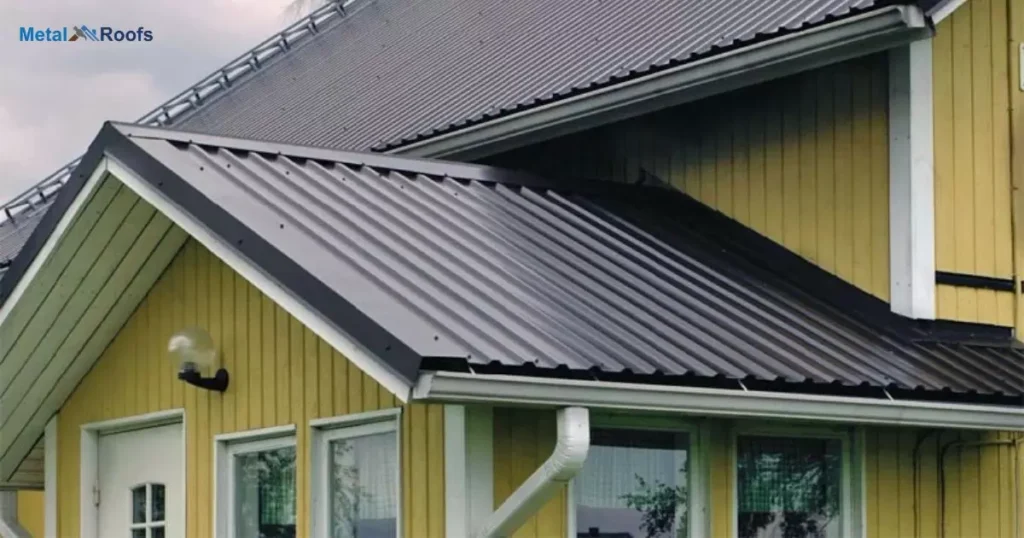
Optimizing network performance is crucial for ensuring smooth operations and efficient data transmission. Here are some tips to help you achieve that:
Bandwidth Management: Allocate bandwidth based on the criticality of applications. Use Quality of Service (QoS) techniques to prioritize traffic, ensuring that important data gets sufficient bandwidth.
Traffic Analysis: Regularly analyze network traffic to identify bandwidth-intensive applications or bottlenecks. Tools like Wireshark or SolarWinds can help in this regard.
Network Monitoring: Implement robust network monitoring solutions to detect performance issues in real-time. Monitoring tools such as Nagios, Zabbix, or PRTG can provide insights into network health and performance metrics.
Update Network Equipment: Ensure that network devices such as routers, switches, and access points are up to date with the latest firmware and configurations. Outdated equipment can lead to performance degradation and security vulnerabilities.
Optimize Protocols: Choose efficient network protocols and configurations. For example, TCP/IP optimization techniques like window scaling can improve data transfer rates over high-latency links.
Use Content Delivery Networks (CDNs): If your network deals with delivering content to users, leverage CDNs to cache content closer to end-users, reducing latency and bandwidth usage.
Implement Caching: Utilize caching servers or proxy servers to store frequently accessed data locally, reducing the need to fetch it from remote servers each time, which can improve response times and reduce bandwidth usage.
Load Balancing: Distribute network traffic across multiple servers or links to prevent overloading and ensure optimal resource utilization. Load balancers can help distribute incoming requests evenly.
Network Segmentation: Divide the network into segments to improve performance and security. Segmenting the network allows for better control of traffic flow and reduces the impact of network congestion.
Optimize DNS: Ensure that Domain Name System (DNS) servers are configured for optimal performance. Consider using DNS caching servers or a distributed DNS architecture to reduce lookup times.
Implement Compression: Use compression techniques to reduce the size of data packets transmitted over the network, thereby conserving bandwidth and improving performance, especially for text-based data.
Regular Maintenance: Perform routine maintenance tasks such as cleaning up unused configurations, optimizing routing tables, and removing network bottlenecks to keep the network running smoothly.
By implementing these tips and continuously monitoring and optimizing your network infrastructure, you can ensure optimal performance and reliability for your organization’s network operations.
Frequently Asked Questions
Is A Metal Roof Waterproof?
Metal roofs are waterproof, effectively shielding homes from rain with durable materials and sealed connections.
What Are Metal Roofs Attached To?
Metal roofs are typically attached directly to the roof deck or purlins using screws or clips for stability.
Do Metal Roofs Have Drip Edge?
Metal roofs typically include drip edges, which guide water away from the roof’s edges, preventing damage.
Conclusion
Metal roofs commonly feature drip edges for effective water management. These edges play a vital role in safeguarding the roof and underlying structure from water damage. Gutters are crucial components that work in tandem with drip edges to channel water away from the building’s foundation, preventing potential issues like rot and mold.
Overall, the proper installation of drip edges and gutters is essential for maintaining the longevity and performance of metal roofs. By ensuring adequate water drainage, homeowners can mitigate the risk of costly repairs due to water infiltration.
